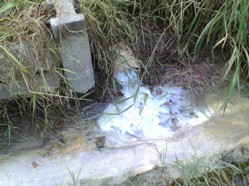
Charlene Knox FGS, Senior Engineer at Card Geotechnics Ltd., reviews the recently reviewed Statutory Guidance on Contaminated Land under Part 2A of the Environmental Protection Act 1990.
Geoscientist Online 12 June 2012
We hear that the UK is currently in recession - its second since 2008. While it has struck business leaders and government officials alike that growth must be firmly on the agenda, ‘deficit reduction’ and ‘austerity’ are still playing major parts in government policies worldwide.
For the past four years, there has been no escaping the ‘belt-tightening’ and the contaminated land industry is no exception. We have had ‘the cull of the QUANGOs’, restructuring of environmental organisations, and budget cuts for local authorities; and significantly, the withdrawal and overhaul of guidance documents that have been integral to the industry. While there has been no change to the fundamental contaminated land legislation, one such recent change has been to the Statutory Guidance on Contaminated Land under Part 2A of the Environmental Protection Act 1990.
The consultation and revisions of the 2006 guidance, led by Defra, led to the revised document being presented to Parliament in February. It has been in force as statutory guidance since April this year. The main motivation for the revision was to address inconsistencies and ambiguities in the original document. Those of us working in the industry know that these have led to unnecessary remediation of certain sites, causing a financial ‘domino-effect’, from developers to the construction industry and ultimately, the UK economy.